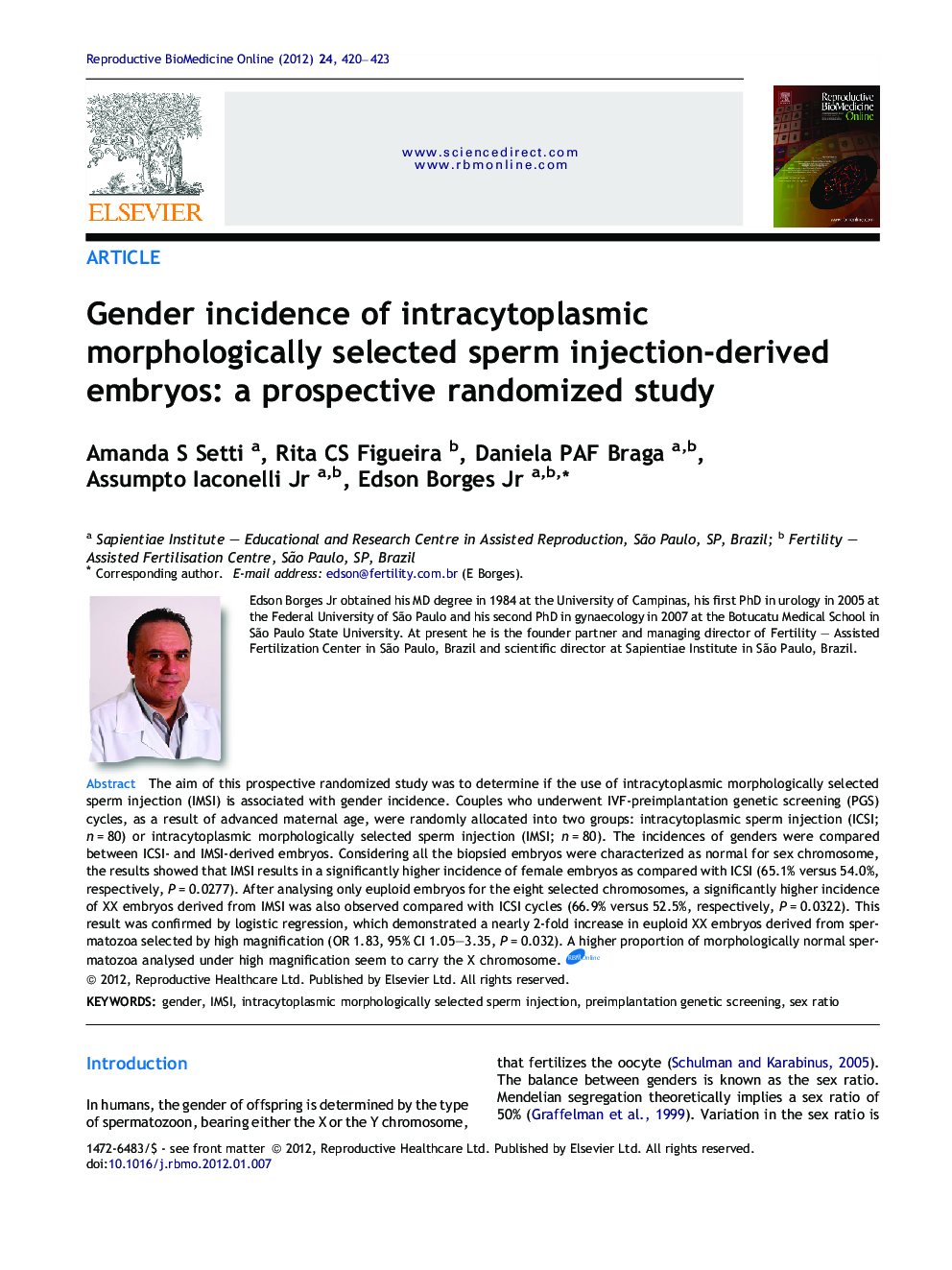| Article ID | Journal | Published Year | Pages | File Type |
|---|---|---|---|---|
| 3970697 | Reproductive BioMedicine Online | 2012 | 4 Pages |
The aim of this prospective randomized study was to determine if the use of intracytoplasmic morphologically selected sperm injection (IMSI) is associated with gender incidence. Couples who underwent IVF-preimplantation genetic screening (PGS) cycles, as a result of advanced maternal age, were randomly allocated into two groups: intracytoplasmic sperm injection (ICSI; n = 80) or intracytoplasmic morphologically selected sperm injection (IMSI; n = 80). The incidences of genders were compared between ICSI- and IMSI-derived embryos. Considering all the biopsied embryos were characterized as normal for sex chromosome, the results showed that IMSI results in a significantly higher incidence of female embryos as compared with ICSI (65.1% versus 54.0%, respectively, P = 0.0277). After analysing only euploid embryos for the eight selected chromosomes, a significantly higher incidence of XX embryos derived from IMSI was also observed compared with ICSI cycles (66.9% versus 52.5%, respectively, P = 0.0322). This result was confirmed by logistic regression, which demonstrated a nearly 2-fold increase in euploid XX embryos derived from spermatozoa selected by high magnification (OR 1.83, 95% CI 1.05–3.35, P = 0.032). A higher proportion of morphologically normal spermatozoa analysed under high magnification seem to carry the X chromosome.The aim of this study was to determine if the use of intracytoplasmic morphologically selected sperm injection (IMSI) is associated with gender incidence. Couples who underwent IVF with preimplantation genetic screening, as a result of advanced maternal age, were randomly allocated into two groups: intracytoplasmic sperm injection (ICSI; n = 80) or intracytoplasmic morphologically selected sperm injection (IMSI; n = 80). The incidences of genders were compared between ICSI- and IMSI-derived embryos. Our results showed that a significantly higher incidence of female embryos derived from IMSI compared with ICSI cycles (66.9% versus 52.5%, respectively, P = 0.0322). This result was confirmed by logistic regression, which demonstrated a nearly 2-fold increase in female embryos derived from sperm selected by high magnification (OR 1.83, 95% CI 1.05–3.35, P = 0.032). A higher proportion of morphologically normal spermatozoa analysed under high magnification seem to carry the X chromosome.
